How to Bring Website Visitors Back w/ Retargeting Ads (the RIGHT Way)

Retargeting, remarketing... Re-smhartketing.
Ok, that last one I made it up.
But the other two are real and they essentially mean the same thing:
Showing your targeted ad messages to people who left your site without buying, signing up, converting—whatever.
Setting up retargeting ads is actually super easy, but there are a few things you need to know before doing so...
In 2015, I launched our first retargeting ad campaign.
We didn’t see great results from the first 5 campaigns I ran back then.
(Partly because of the tool I was using, but I’ll tell you about that coming up).
But then, I shifted gears and revamped our retargeting strategy.
And we actually started to see more leads and sales come in, BUT...
Let’s be clear about something here...
There was (and still is) a lot of hype around retargeting. Some of it is justified. Most is not.
Retargeting is really simple, and if you do it right, you’ll see a 1-5% increase in sales or qualified leads pretty quick—and even more over time!
That’s because even if your retargeting strategy is super basic, it’s exercising a key Sales Funnel Physics’ law: “The Law of Repetition”.
But before we get to all that, here’s what I’m giving you today to help you create, launch, and optimize your first retargeting ad campaign:
- What retargeting ads are and how they really work when implemented right.
- The top tools and proven-to-convert tactics I recommend to get better results.
- And 5 quick tips (with mistakes to avoid) as well as advanced recommendations for setting up a campaign that brings in leads and sales.
Let’s start by answering the most common questions about growing with retargeting...
In a rush? Want to download this article as a PDF so you can easily take action on it later? Click here to download this article as a PDF guide.

What is Retargeting?
Retargeting is a highly effective method for converting leads.
It reaches out to people who visited your site and then left without converting into customers.
The intention of the retargeting ads is simple. To “chase” after those prospects and convert them into leads.
Let’s take a quick look at how the process works.
First, a prospect arrives on any of your landing pages and a cookie is set on their browser.
This is the typical message about cookies you see when you land on most websites…
![]()

Let’s say that a visitor navigates through your site. Then he/she leaves before they purchase any of your products. Or maybe even before downloading your lead magnet.
Then, this same prospect browses other websites (like Facebook, Youtube, or any other website that allows banner ads). Well, ads from your website will be shown to that cookie’d visitor.
For example, this is one of our retargeting ads. It displays on people who previously visited Growbo.com.
The end goal here is to make those site visitors come back to our website again. This way, we can finally convert them into paying customers.
According to Business Insider, 97% of people who visit your website for the first time leaves without spending a dime. And when you consider this, it’s clear how necessary retargeting really is.
Retargeting is simply one of the most effective marketing strategies.
And in fact, 26% of customers will return to a site through retargeting according to Invespcro.
Retargeting vs. Remarketing: Is There a Difference?
Yes. There most certainly is a difference between remarketing and retargeting.

As Neil Patel describes it…
“I see remarketing more as an umbrella term for marketing to the same prospect multiple times, whereas retargeting really is targeting online ads at the same traffic again and again.”

So retargeting is using ads to bring visitors back to your site.
But remarketing, can involve anything from phone, social media, or even offline follow-up. But it’s most commonly used when following up via email.
And this is one of the easiest ways to reach out to those visitors who visited your site but left without converting.
There are remarketing services like Rejoiner and Carthook for eCommerce businesses. They will send customers who didn’t complete their purchase follow-up email sequences.
And it’s exactly what we at Growbo do for the funnels we create for our clients.
We send a set of emails to prospects to try to get them back in the funnel and eventually convert them into paying customers.
You see, remarketing ad clicks can cost you anywhere from 2-100x less according to WordStream. And you can see higher conversion rates with search ads vs. display/social remarketing. However, the cost per click will also be higher.
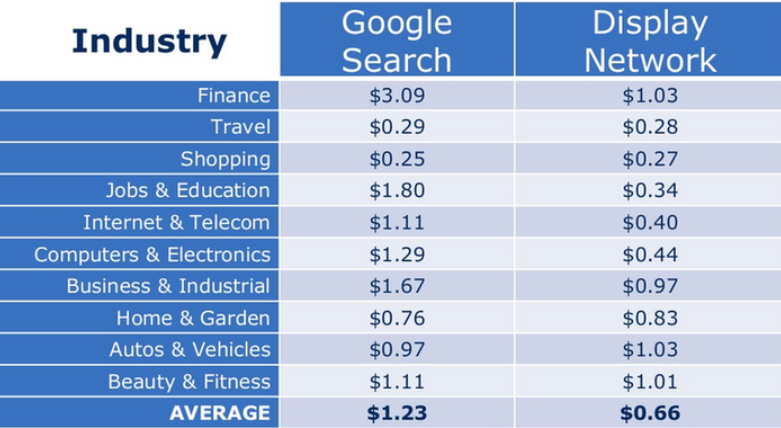
And if the higher conversion rate is offset by higher click prices, social/display remarketing could even deliver a higher return on investment (ROI).
Retargeting involves follow-up but using display ads across third-party websites.
This is what the process looks like...
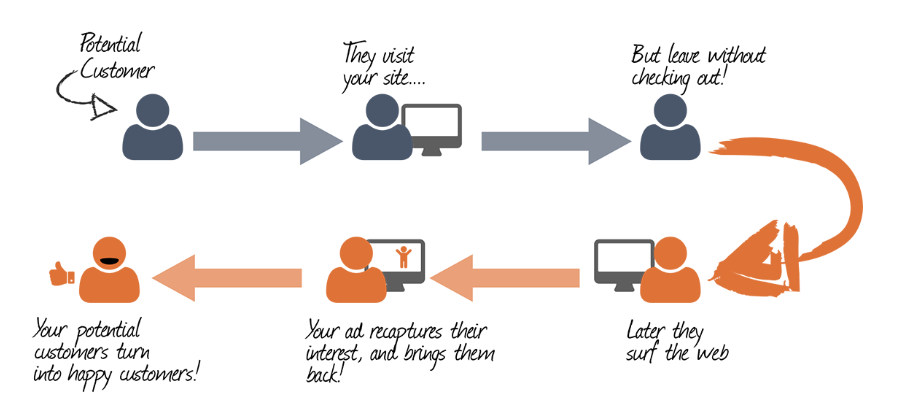
Sometimes this is called “site retargeting.” And it means pretty much what I already covered above for retargeting.
A website visitor gets a cookie tracking file placed on their browser after visiting a site. And then, that website’s ads follow that former visitor around the internet.
Pretty simple.
Google has actually chosen to muddy the waters a bit by using the word “remarketing” to refer to its search retargeting feature in Adwords. This is an exception to the generally held definition.
So anyway, there are other types of retargeting.
“Dynamic/product retargeting” is one example.
This is commonly used to show visitors ads based on specific products or sets of products they previously viewed on your site.
Let's say you search in Amazon for laptops. You’ll likely see ads for the exact (or similar) products (laptops or computers) you viewed following you around the web.
Remarketing is what WordStream has been using since 2012. And in fact, they actually spent over $500,000 on these ads alone in one year.
And according to Larry Kim, its founder:
“I’ve been using remarketing at WordStream since 2012 and last year, we spent over $500,000 on these ads alone. Why?
Because they’re freaking awesome.”

How Much Does a Successful Retargeting Ad Campaign Cost?
Retargeting ad campaigns are very affordable compared to other types of paid ads. And they’re actually a guarantee that the traffic you’ll get is high-quality. This is because the people retargeted are already familiar with your website or brand.
And website visitors who are retargeted with display ads are more likely to convert by 70%. Plus, 26% of customers will return to a site through retargeting according to Invespcro.
Now, take a look at this research by Statista. It estimates that ad spending worldwide would surpass 560 billion U.S. dollars in 2019. This represents a growth of 4% compared with the previous year.
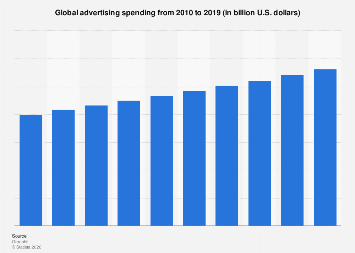
But that doesn’t mean you should blindly throw your ad spend around and cross your fingers hoping that something will happen.
Instead, you need to determine how much money you want to spend and how you want to spend it.
So plan ahead. Determine what your budget would be for acquiring a customer through retargeting and when you should pull the plug.
But determining how to set up your cost (CPC, CPM, CPA) can be tricky.
So you want to get the best value for the money you spend by breaking down the cost.
For instance, when you utilize an ad provider, you’ll be sold retargeting ad space in one of the following ways:
CPC (Cost-per-click): This is the price you pay for each click in your pay-per-click (PPC) marketing campaigns.
You’ll only be charged when someone clicks on your retargeting ad. And you set up a spend per click limit, for example, $3/click, $5/click. Then, your ad will only be displayed on the sites where it costs up to that target amount per click.
CPC is a good option when the people who click on your ads are actually converting on your offer. And if you’re not getting a lot of clicks, re-evaluate your funnel. Determine why prospects aren’t converting. And consider using our Ultimate Sales Funnel Template for inspiration.
The average CPC varies depending on the industry and business type. But according to WordStream, the average CPC across all industries is about $2.76.
Take a look for a second at the graph below. See how the average Google ads benchmarks for different industries vary? And how they have actually increased during COVID-19??
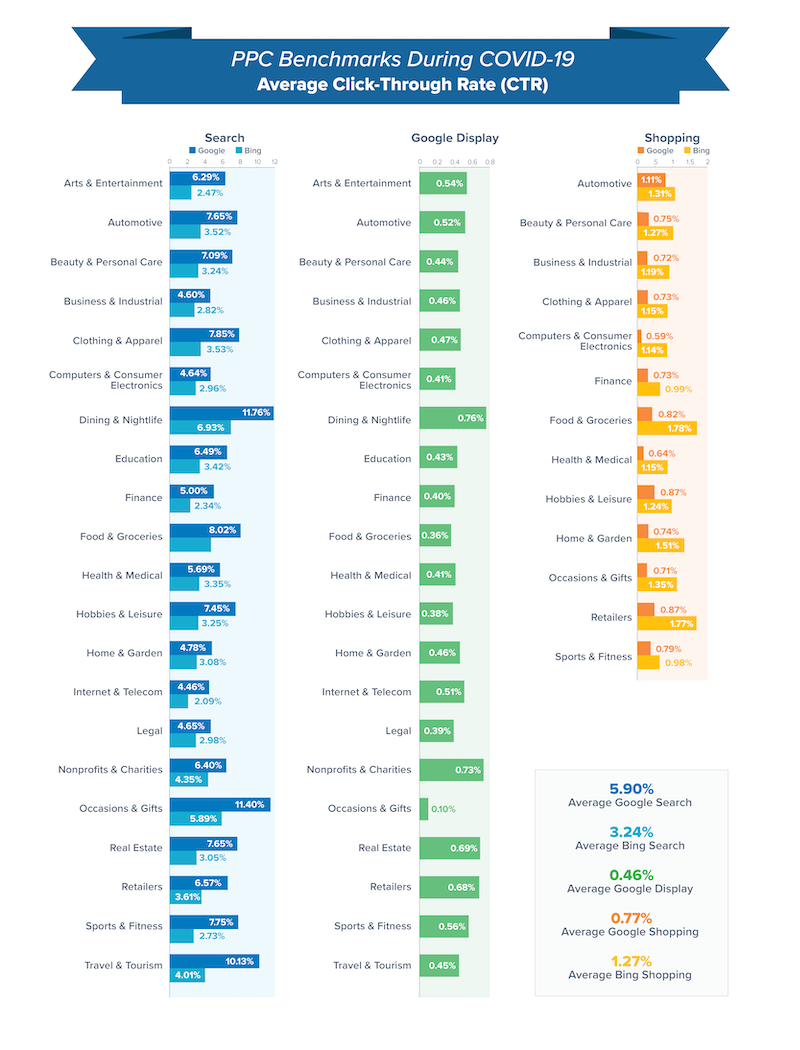
CPM (Cost-per-mille/Cost per 1,000 impressions): This is the price of 1,000 ad impressions. This means that if your ad is shown 1,000 times in any number of landing pages, you’ll be charged a certain amount of money.
Sometimes, if your retargeting ads are showing at the bottom of the screen, no one will see them, and therefore, no one will click. Simply put, you’re paying whether you get clicks or not.
And if this is the case, then it’s time again to evaluate your funnel and determine where’s the bottleneck.
CPA (Cost-per-acquisition): This is how much it will cost you for one person to convert on your offer. It’ll guarantee that you’ll only be paying for actual conversions through your retargeting efforts.
But the downside is, CPA is tricky to measure.
Here’s Proof that Retargeting Ads Work to Drive Leads & Sales (3 Successful Examples)…
Take a look at these examples of successful retargeting ad campaigns.
Example #1: Mazda—High-Conversion Rates by Creating Location-Specific Ad Campaigns

This multinational automaker was looking to get more butts to sit in their cars.
Mazda partnered with Merchenta. This is a retargeting software company.
They helped Mazda get more website visitors into their local auto dealerships. All this because they wanted to sell more cars.
And they did so through PPC ads.
Their branded and dynamic IntelliAds had a massive impact on Mazda’s audience...
- Prospects who saw the ads converted at a 53% higher rate than people who didn’t.
- The value of car sales through the retargeting ads was 98% higher than the offline average.
- And almost 1 in 5 consumers interacted with an IntelliAd.
Now, those results were possible for two reasons. First, the ads were customized based on geographic radius.
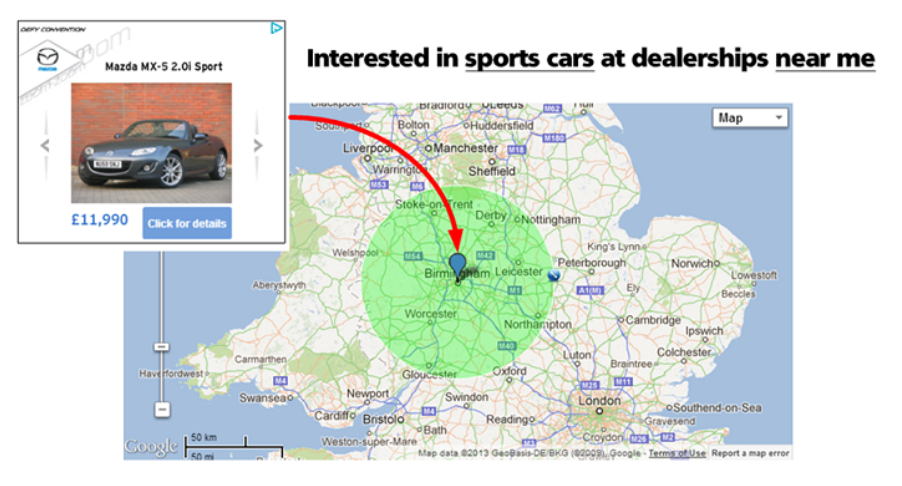
And second, they advertised only the Mazda model(s) available at a specific auto dealership.
They matched the inventory with dealerships that were local to the people targeted. And this made it easy for potential buyers to see only the car models available in their area.
No long drives just to hear: "Sorry, this car model isn't available at this dealership."
This really helped target people who were more likely to go to a specific Mazda auto dealership in a specific location.
The bottom line is, you can use Google Ads dynamic remarketing and create location-specific ad campaigns to target individual audience groups just like Mazda did.
Example #2: eBags—Conversion Lift, Efficiency Boost, & Traffic Increase by Using Google Ads
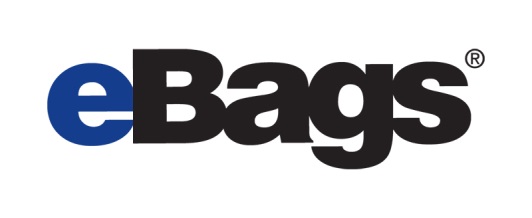
World's largest online retailer of bags and accessories, eBags, automated their retargeting bidding process. They used Google Ads Return On Ad Spend (ROAS) functionality with AdWords Remarketing.
Using programmatic remarketing with ROAS targeting allows you to actually save a lot of time optimizing.
This company has sold over 17 million bags over the past 16 years. They sought for more sales and to remain ahead of competitors.
According to Google, if the goal of a company is to earn $7 for each $1 spent on ads, then AdWords sets bids automatically to get prospects as close as possible to that 700% return.
And here’s what eBags did.
They used Gmail ads to cross-sell complementary products to customers who had previously bought something from other retailers.
They leveraged Gmail promotion to get a more relevant, targeted messaging.
In the ad below you can see how they added complementary laptop bags to the combo of conventional bags...

Cross-selling those laptop bags to people who have already bought computers from other retailers is simply brilliant.
Then, they used Remarketing Lists for Search Ads (RLSA). RLSA helps convert people who are comparison shopping on Google.
eBag added positive bid modifiers on past customers and on people who had abandoned their shopping carts during the last 7 days.
And they used Product Listing Ads (PLAs) to add product photos and prices on the ads on Google search results.
Well, eBag ended up seeing a lift in revenue and traffic as a result.
Their regular ad spend was quite high, but their retargeting ad campaign added an additional 15% in revenue and they maximized efficiency by 25%.
Example #3: Myfix Cycles—Boost in ROAS by using Facebook Pixel
Canadian bicycle retailer, Myfix Cycles was barely breaking even with their Google Ads.
They partnered up with Webrunner Media Group. And even though their budget was small, they started running a retargeting campaign on Facebook.
For their campaign, they set up Facebook pixel and conversion tracking on their website.
Their ad frequency was between 5-7 times. And they created 3 audiences:
- People who visited their website in the past 14 days
- People who had added a product to their cart in the past 14 days
- People who purchased any products from Myfix in the past 180 days.
The third audience they created was excluded from the campaign.
Since people don’t buy bicycles that often, targeting that audience with their ads would have been money down the drain.
In the end, their strategy paid off because their results were huge. They generated close to $15 for every $1 spent according to CXL.
That was a return on ad spend (ROAS) of 1,529%.
Retargeting Strategy First: Retarget In these Scenarios
So you have a clear understanding of what retargeting and remarketing are and their differences. Now it’s time to get into some of the nitty-gritty of when you should do retargeting.
You basically need to do retargeting when…
When You Want to Increase Conversions:
When you launch your first campaign, don’t make the amateur mistake of sending traffic right to your homepage.
People who click on your ads should be redirected to a unique landing page with a specific offer so they can take action. Remember, the purpose of a landing page is to drive conversions (e.g. filling out a form or entering someone’s email address).
To do this, have clear copy and CTA buttons. This will help people know exactly what to do when they land on your page.
See how the CTA button above is clear enough? We're inviting prospects to watch a demo. Simple.
When I first launched our retargeting campaign years ago, I made a mistake. I redirected prospects to a landing page with a lot of text and too many design elements.
I came to realize these problems after I saw a poor conversion rate of about 6%. I knew this was a poor conversion rate for several reasons:
- I was offering something for free (our free lead generation course).
- Landing pages with similar offers were converting between 30-70%.
- The nature of retargeting is that you’re pulling back people who have already been on your website.
- I asked two people for feedback. One had no marketing experience, and the other is a friend who was a web marketing expert. Both gave similar responses.
- I knew the value of a conversion and my cost was significantly higher than that conversion value.
Bottom line: DON'T send people to your homepage after clicking on your ads.
You Need Prospects to Take Action:
A well-constructed sales funnel starts by redirecting people to the right pages. Avoid not giving clear guidance on what you want your prospects to do in your funnel.
For this, make sure that after a desired action is taken on each landing page, the visitor is redirected to the right page.
For example, if prospects download your lead magnet, acknowledge that action they just took and send them to a “Congratulations for downloading your lead magnet” page.
See how in the screenshot above, the prospect is being congratulated for downloading the lead magnet? And not only that, but they're being guided to continue taking action.
You then want to take the URL of that thank you page and set it as your conversion goal for your campaign. Without a conversion goal setup, you’ll have no idea if the money you’re spending is driving results (or not) for your business.
Ideally, you should have the same conversion goal(s) set up in Google Analytics. This will help you compare results to make sure the numbers match. It will also give you peace of mind that your campaign tracking is properly set up.
Bottom line: DON'T let your prospects decide what to do on your site. Clearly guide them through your funnel and show them the way to your checkout page.
Exclude Some Prospects from the Campaign:
When you exclude certain visitors from your retargeting campaign, those prospects won’t see your ads.
Excluding some people from your campaign is important. This is because you don’t want to waste money and time on visitors who have already converted on your offers. In addition, this can be particularly annoying to those visitors.
Here’s what I recommend as far as who to exclude in your retargeting:
- Exclude people who have already converted on your campaign’s goal (e.g. they’ve filled out your form and redirected to the thank you page) or who have reached another key post-conversion thank you page on your website.
- Exclude people who are already on your email list. An ideal retargeting campaign converts visitors coming back to a website with free offers that are designed to capture email addresses for follow-up and relationship nurturing.
Both of these exclusion options are imperfect. There will still be some people who are shown your retargeting ads who don’t need or want to see them. But the net result is substantially better.
Bottom line: DON'T target everyone in your audience. Exclude people you know you can't convert into paying customers.
Now, let’s look at these self-service tools for retargeting...
What Retargeting Tools or Ad Network Should You Use (& Which to Avoid…)
When it comes to tools to set up your retargeting, here are my top recommendations (and which one you should not use).
Growbo

If you’re looking to delegate any digital marketing tasks, Growbo helps you scale your business while saving $10,000's and eliminates the pain of hiring a team to do so.
When it comes to ad campaigns, we take care of all the processes for you. From conducting research and competitors analysis—to campaign optimization and retargeting ads setup.
We have expertise working with Google, Facebook, Twitter and LinkedIn.

If you’re a do-it-yourselfer type of marketer looking to reach the widest audience possible and segment that audience into specific target segments, then Facebook is definitely the best choice.
They help you advertise to people who have already visited your website, app, store, or Facebook Page. They let you personalize every ad for every customer, and they show people items they’re most interested in.
As a matter of fact, the luxury fashion retailer, Michael Kors, ran Facebook Augmented Reality ads to increase awareness.
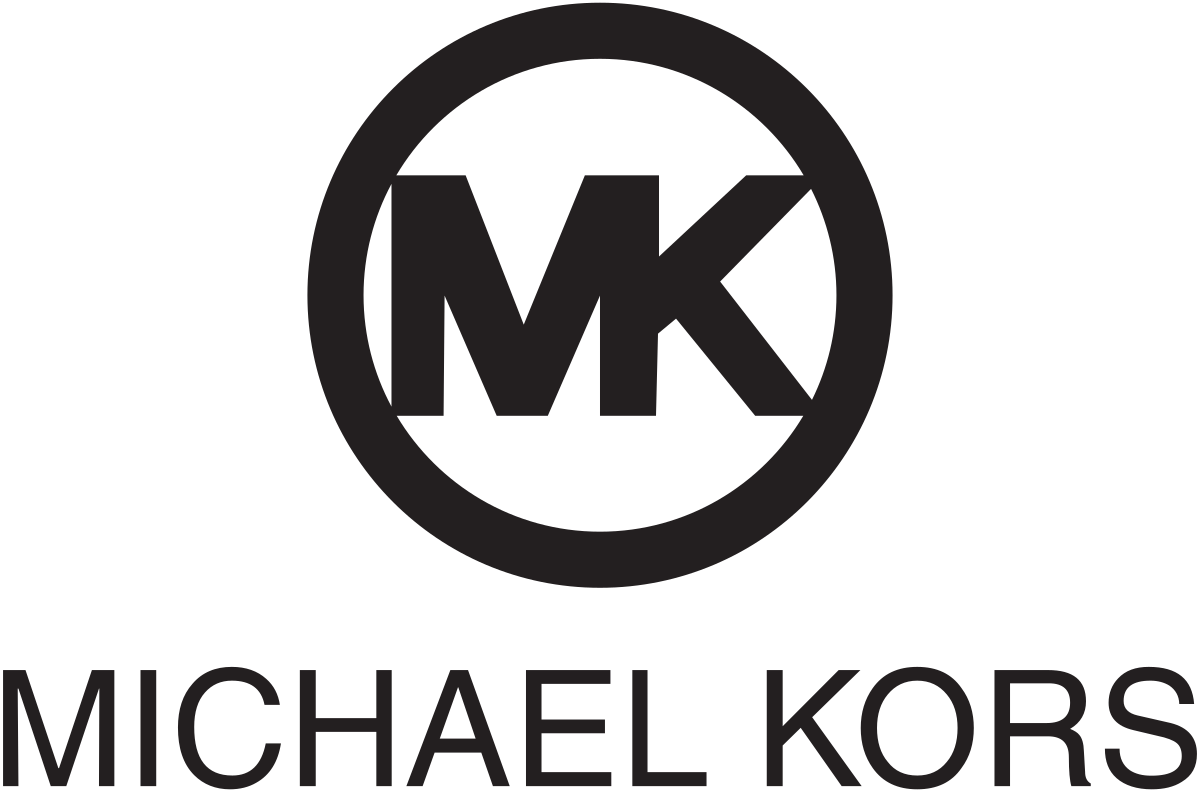
The result of this campaign was an incremental 14% lift in purchases for their Lon aviator sunglasses.
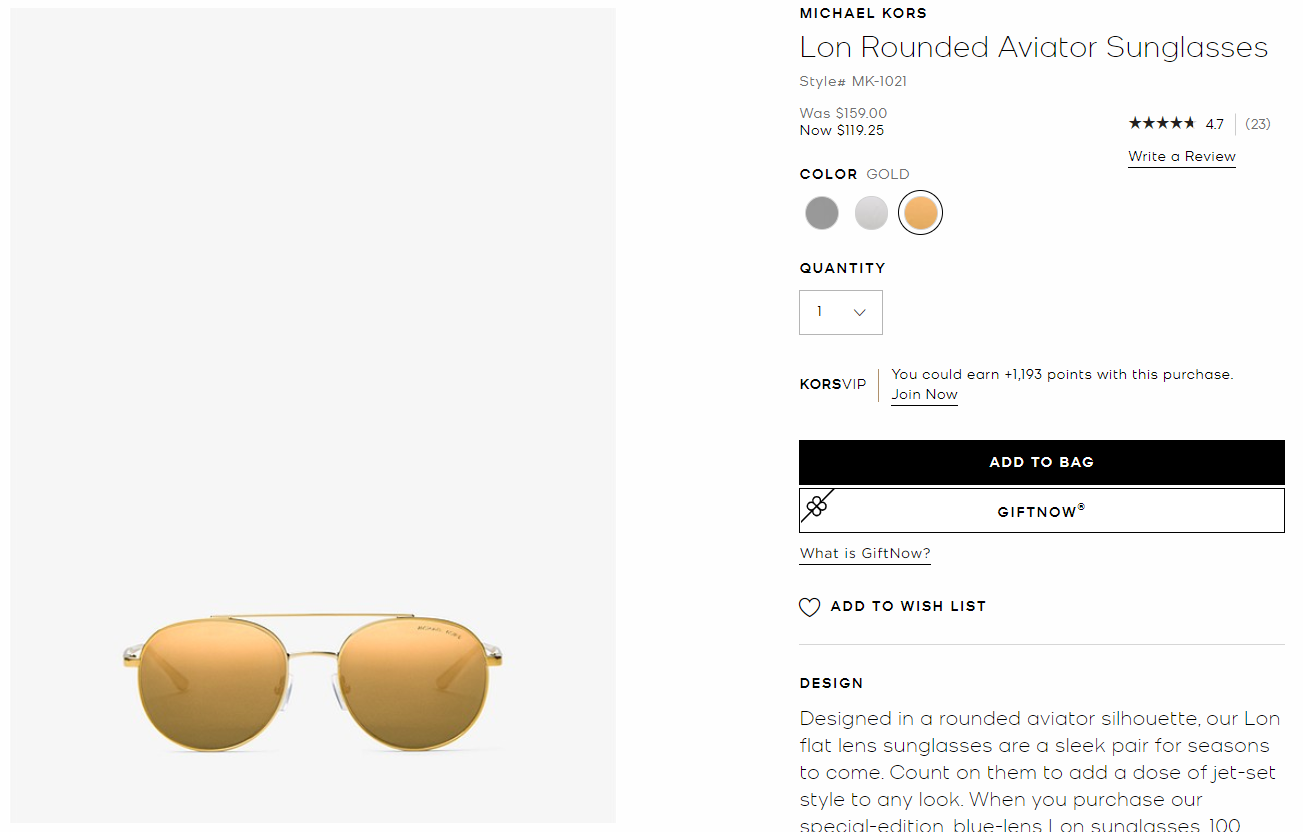
The ads were delivered in the Facebook news feed to women in the U.S. aged 18 and over, to previous buyers of sunglasses, to people interested in the Michael Kors products, and people interested in purchasing eCommerce goods online.
And it’s no wonder why this strategy works: Facebook is absolutely huge.
2.5 billion people use Facebook every day, and over 1.6 billion are active users.
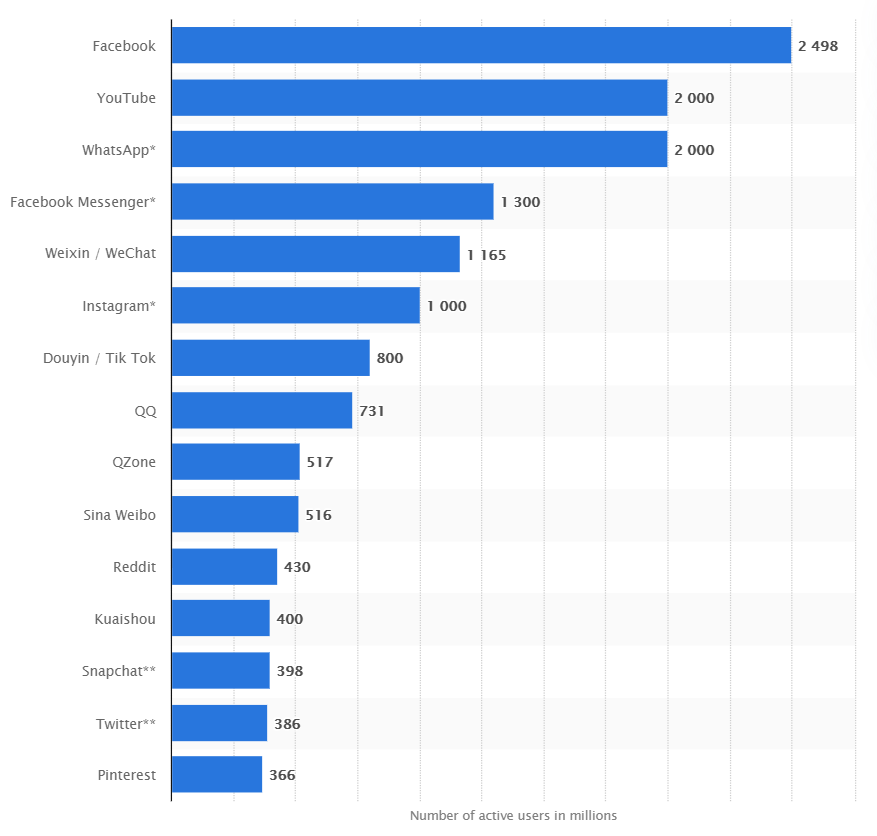
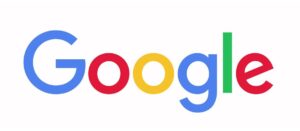
For setting up Google search retargeting, you need to have an Ads account.
Google displays your ads in over 2 million sites and reaches over 90% of people on the Internet.
They offer a very useful option called “Remarketing Lists for Search Ads” (RLSA).
This allows you to target your ads to people on Google who have recently searched for keywords related to your business.
And since your targeting of ads to their users is based on their recent search intention, this can have a profoundly positive influence on your conversion rate (unlike “identity-based” ad targeting on something like Facebook, which does not necessarily align with a person’s intention or need).
Google also allows you to do general-purpose retargeting but Adwords’ interface is cluttered with other features (more relevant to general-purpose search ads).
Plus, they don’t currently allow you to do retargeting on social media sites like Facebook and Twitter.
Perfect Audience

I personally don’t recommend this tool and here’s why.
We used it in the past and recommended it for quickly setting up and running your retargeting ads.
Their user interface is simple and user-friendly. Their analytics and conversion tracking are good, and finally, their support staff is helpful and relatively timely in getting back to you if you have a question.
This tool works with small and large ad networks giving you plenty of reach.
However, their price markup and the frequency of the ads is kind of ridiculous.
Compared to Google where you can control the frequency rate, with Perfect Audience it just keeps showing the ads to the same people over and over.
And this is a matter of effectiveness. Because after 2, 3 weeks, you won’t want to keep showing your ads to the same person.
So the ability to control and limit the frequency of my ads is especially important to me. And Perfect Audience, in my opinion, isn’t the right option for that.
Ads being displayed with a frequency of 10 times I think is fine because sometimes people may not see them. But showing them 30 times, that’s too much.
People sometimes rave about retargeting. But to me, all the money we spent in the past retargeting with Perfect Audience, I don’t think it was that effective. It only helped us boost conversion by 5-10%.
So now you know which tools I recommend and which one I don’t. Now, let’s go over a few steps to make sure your first retargeting campaign is successfully set up.
This Is How to Set Up Your Retargeting Ads on Facebook (Step-by-Step)

If you’re ready to set up your Facebook retargeting campaign, then follow these simple steps.
1. Log in to Facebook Ads Manager.
2. Get your pixel code and place it on your website. If you don’t have Facebook pixel (tracking) code on your website, you’ll need it in order to start retargeting.
3. Click on Business Manager at the top left side of the screen.

4. Select Audiences in the dropdown menu on the top left corner of the page.
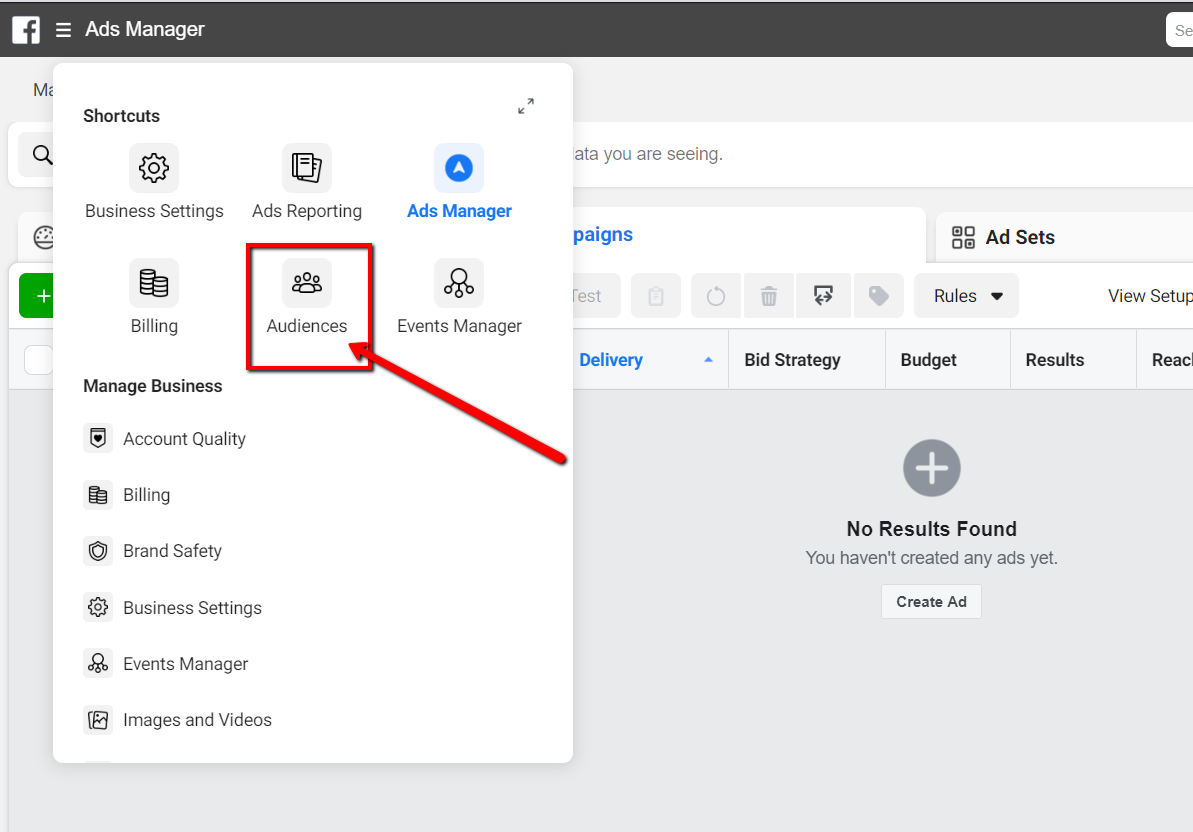
5. Click on “Create Audience” and select “Create a Custom Audience.” This option will allow you to set up a campaign that connects with people who already visited your website and shown some interest in your website.
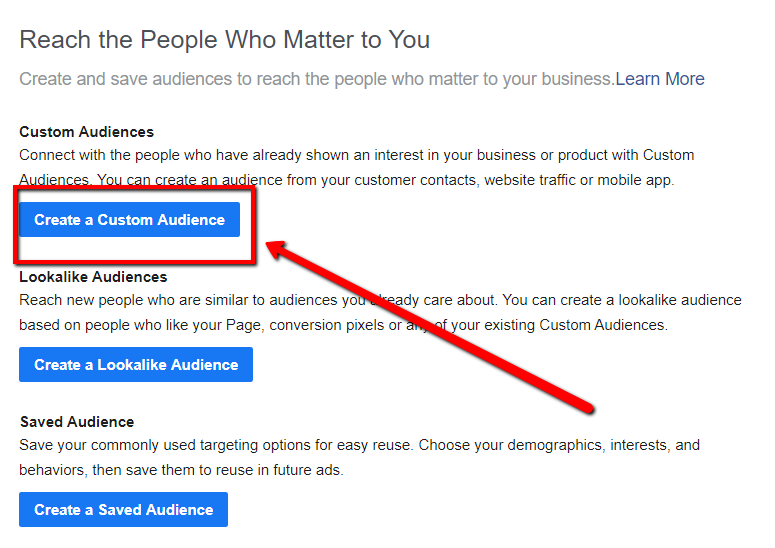
6. Select your website traffic to reach the people who landed on any of your landing pages.
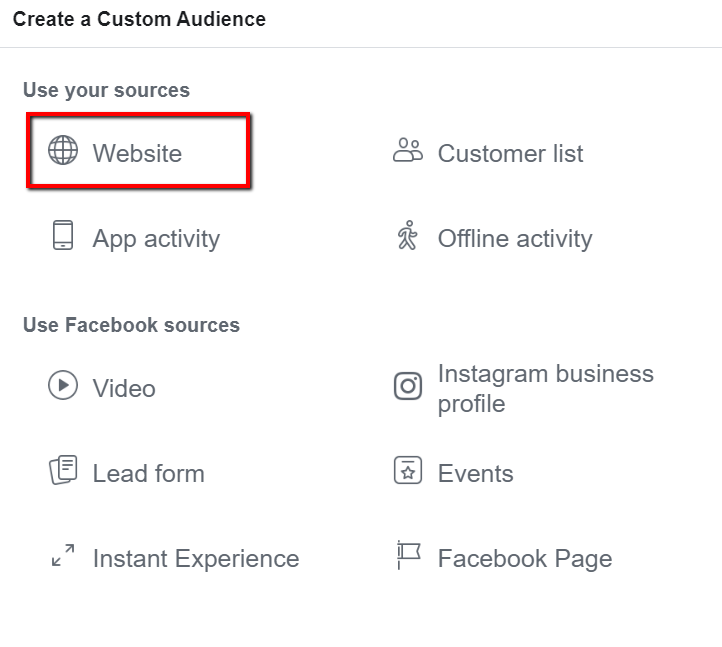
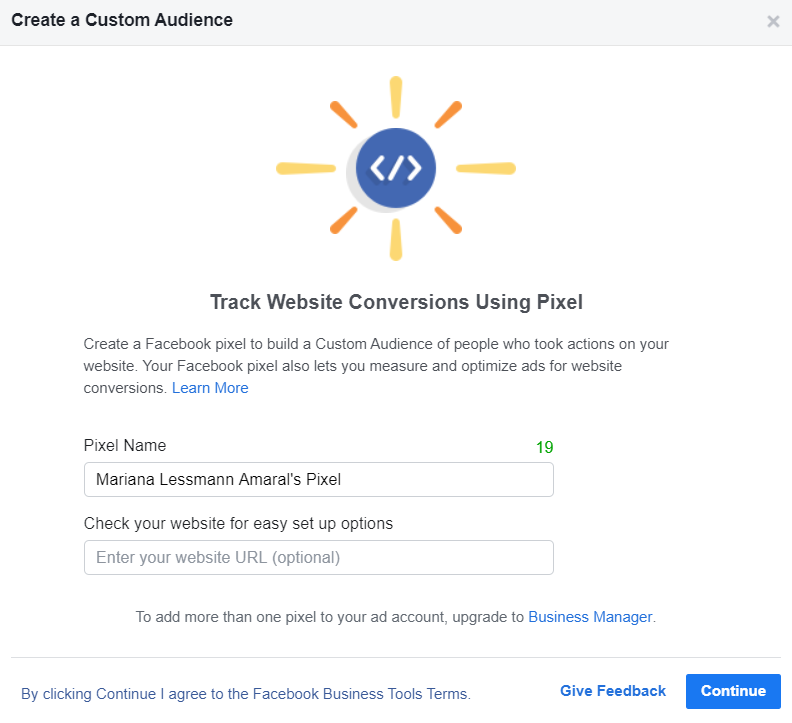
7. Select your target audience from the dropdown menu.
In this step, you can create your audience, target a date range, name the audience, and target the following:
- Anyone who visits your website
- People who visit specific landing pages
- People who visit specific web pages but not others
- People who haven’t visited the pages in a certain amount of time
- Custom combination
8. Click on “Create Audience” at the bottom right corner of the page.
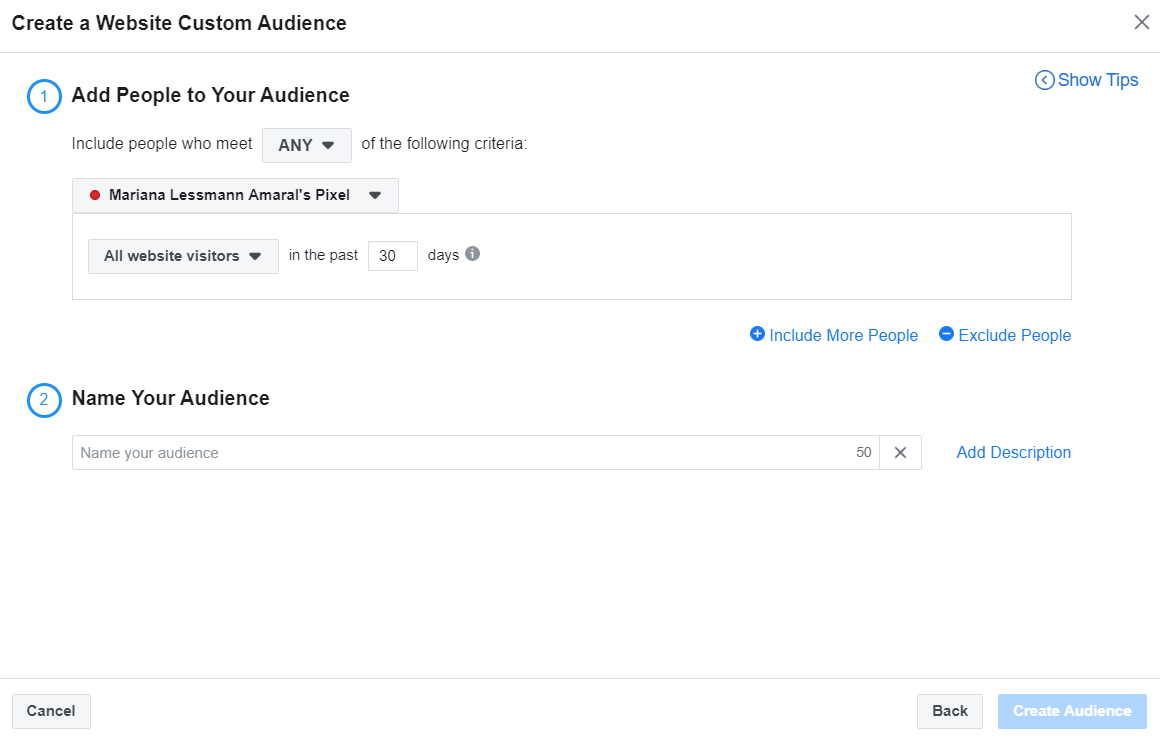
9. Click on “Ads Manager” in the top left dropdown menu.
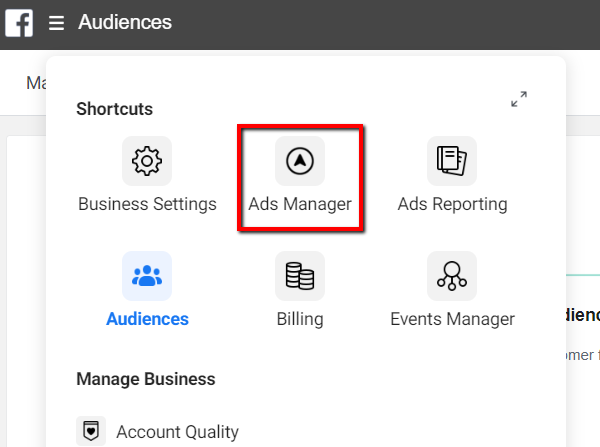
10. Click on “Create.”

11. Choose ”Catalog Sales” as your marketing objective (if you have previously created your product catalog on Facebook and choose ”Conversions” as your marketing objective.)
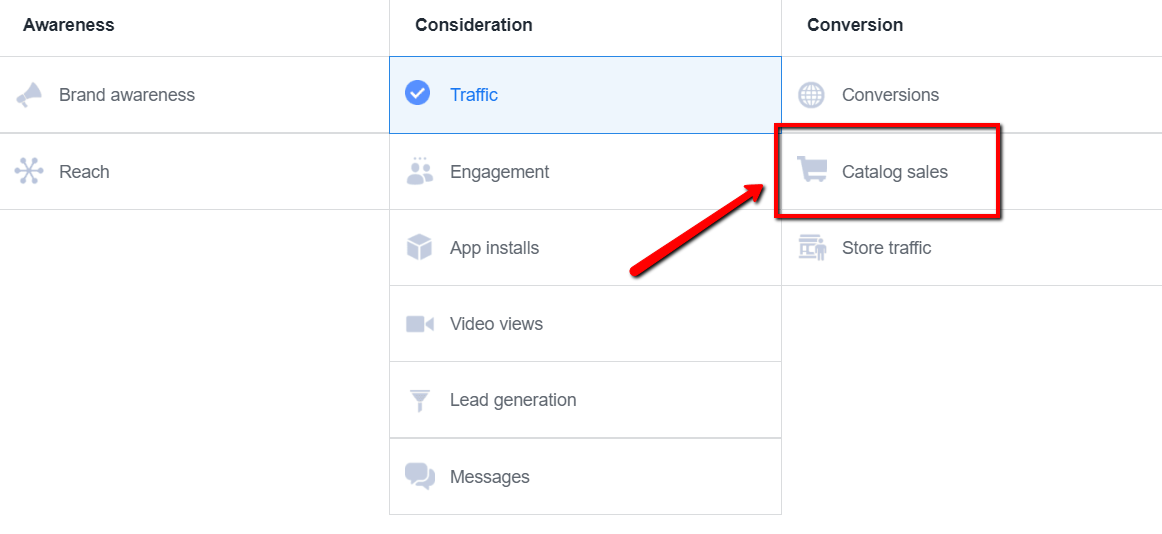
And now you’re ready to go!
THIS is How to Setup Your Retargeting Ads on Google (Step-by-Step)

1. Sign in to your Google Ads account.
2. Click on “Campaigns” from the page menu.

3. Click the plus button to create the new campaign.
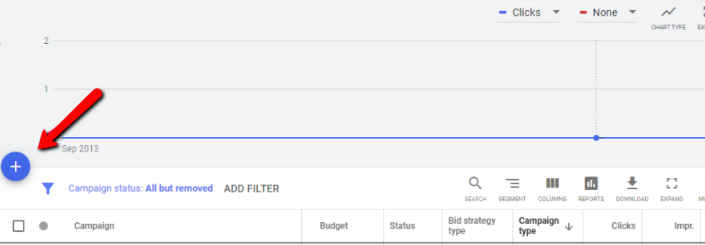
4. Choose the desired result of your campaign in the “Goals” section.
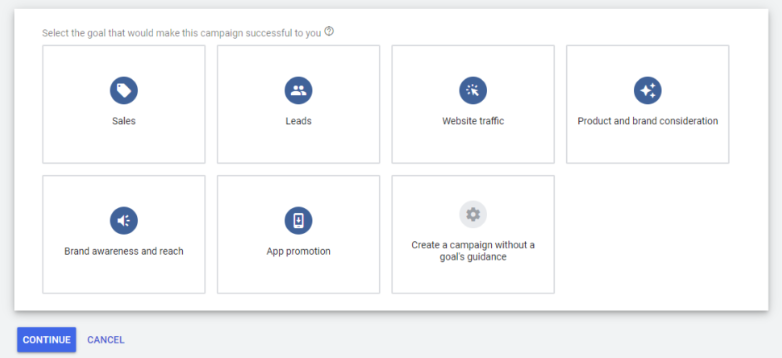
5. Select Display, Standard Display Campaign

6. Set parameters for your campaign (campaign name, location and language, and strategy and budget.

7. Click “Additional Settings” for more options, like ad scheduling, content exclusions, or device targeting.

8. “Audiences” in the “People” section will be opened by default.
9. Click “Remarketing.”
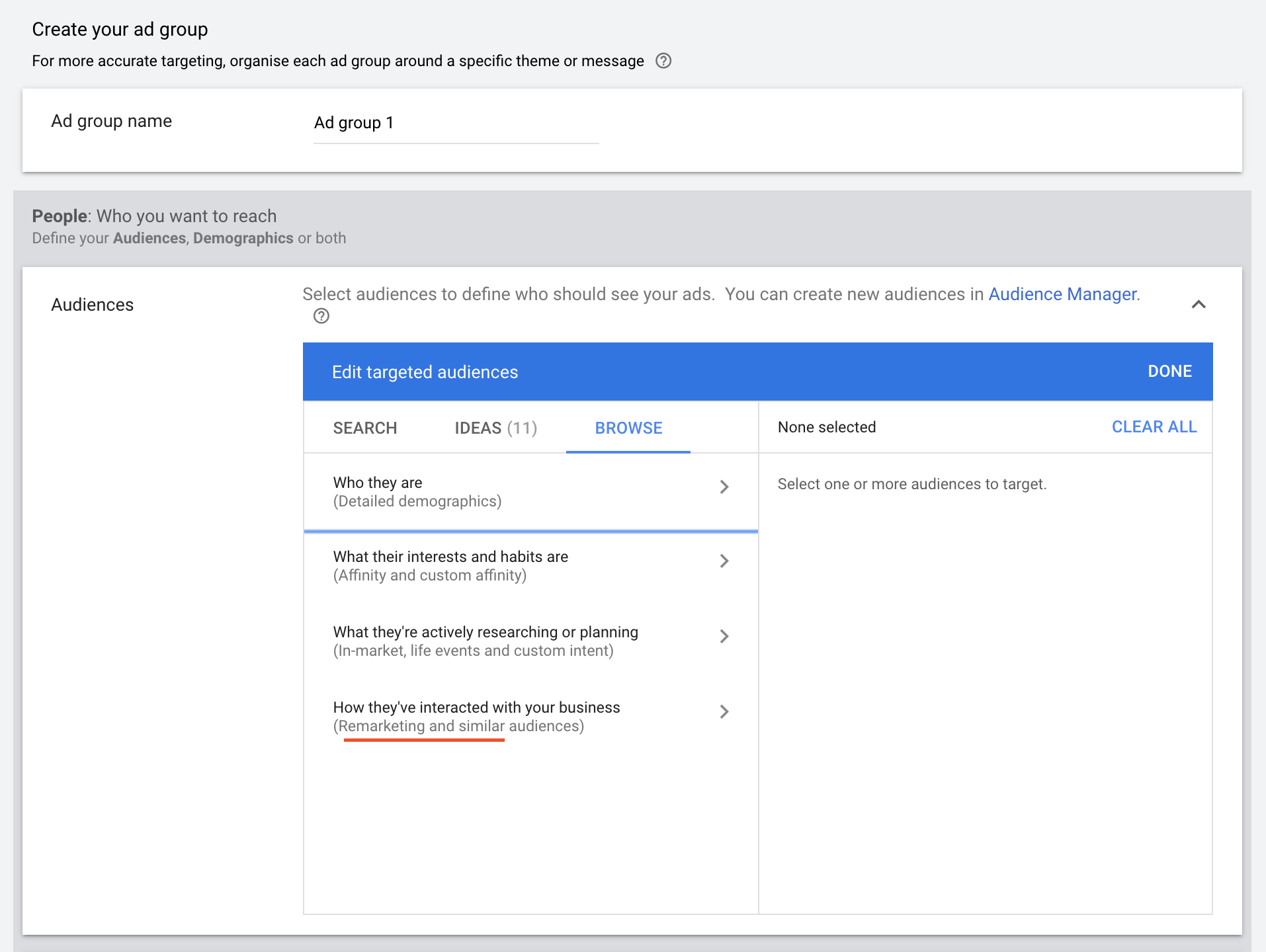
10. Click the checkbox next to the audiences you'd like to add.

11. Finally, click “Create Campaign”

Conclusion
Download the “How to Bring Website Visitors Back w/ Retargeting Ads (the RIGHT Way)” so you won’t forget to take action on it later. Click here to download it now.
Remarketing is still a relatively new advertising technique. Yet, most businesses ignore this low-hanging fruit opportunity.
It takes a maximum of 5 hours to set up with minimal maintenance required over time.
With retargeting, you bring back visitors who left your website with your ads chasing after them around the web as they browse through other websites.
There are a number of self-service tools out there today that help you get up quickly and affordably, like Growbo (of course), Google, and Facebook.
And if you’re looking to generate more leads with retargeting, your ads don’t have to be complicated. Just make sure to set up your goals and don’t retarget everyone.
And after your ad campaign is running, consider finding ways to increase your conversion rate like improving the speed of the landing pages in your campaign, A/B testing, or optimizing your funnel.
Now tell me something, can you think of some other advanced retargeting tactics, strategies, or tools that are worth mentioning?
Let me know in the comments below.
Keep Growin’, stay focused,



















